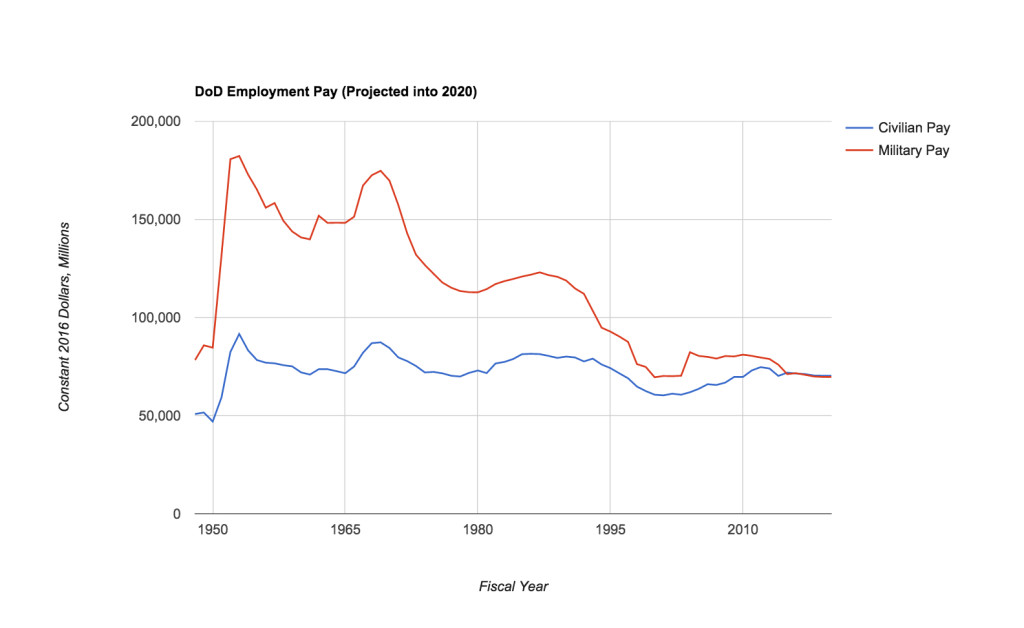The military arm of the U.S. Defense Department is only part of the world’s largest employer. Between 2001 and 2012 the active-duty military grew by 3.4 percent, but the civilian side of the department grew 15 percent. Estimates place civilian employees of the Pentagon at over 800,000. When contractors are factored in, the total number of civilians comes to over 1.4 million.
Advocates of this growth argue that civilians were hired to close a knowledge and skills gap created by personnel drawdowns in the ‘80s and ‘90s. This may be true, but in an era of budget constraints, the level of civilian employment at the Defense Department should be examined. This is particularly the case as military commanders argue that the levels of personnel they can afford are below the requirements placed on them to fulfill their missions.
According to projections from the annual Department of Defense “Green Books,” civilian pay will overtake military pay by 2020.
The Congressional Budget Office calculates that over the next decade, civilian pay will account for two-thirds of the growth in operational and maintenance spending – a time when the Budget Control Act spending limits will trim $1 trillion from defense spending growth.
There has been some movement on this issue. In January, Rep. Ken Calvert introduced the Rebalance for an Effective Defense Uniform and Civilian Employees (REDUCE) Act, which would reduce the defense civilian workforce 15 percent by 2022 and cap the civilian workforce at that level until 2026. Sens. John McCain and Jack Reed have included in the National Defense Authorization Act for Fiscal Year 2016 measures that would reduce funding for headquarters and administrative functions throughout the Defense Department by 7.5 percent. Additionally, the Act emphasizes performance as the primary basis for evaluating, and laying off, civilian employees.
It’s important to note that many civilian employees and contractors support vital tasks. However, it makes sense to review the level of civilian employment as the Iraq and Afghanistan wars draw to an end, particularly in an era of budgetary constraints and debates over compensation for active military. That the process was handled poorly in previous drawdowns is no reason for the issue to be closed to conversation.
